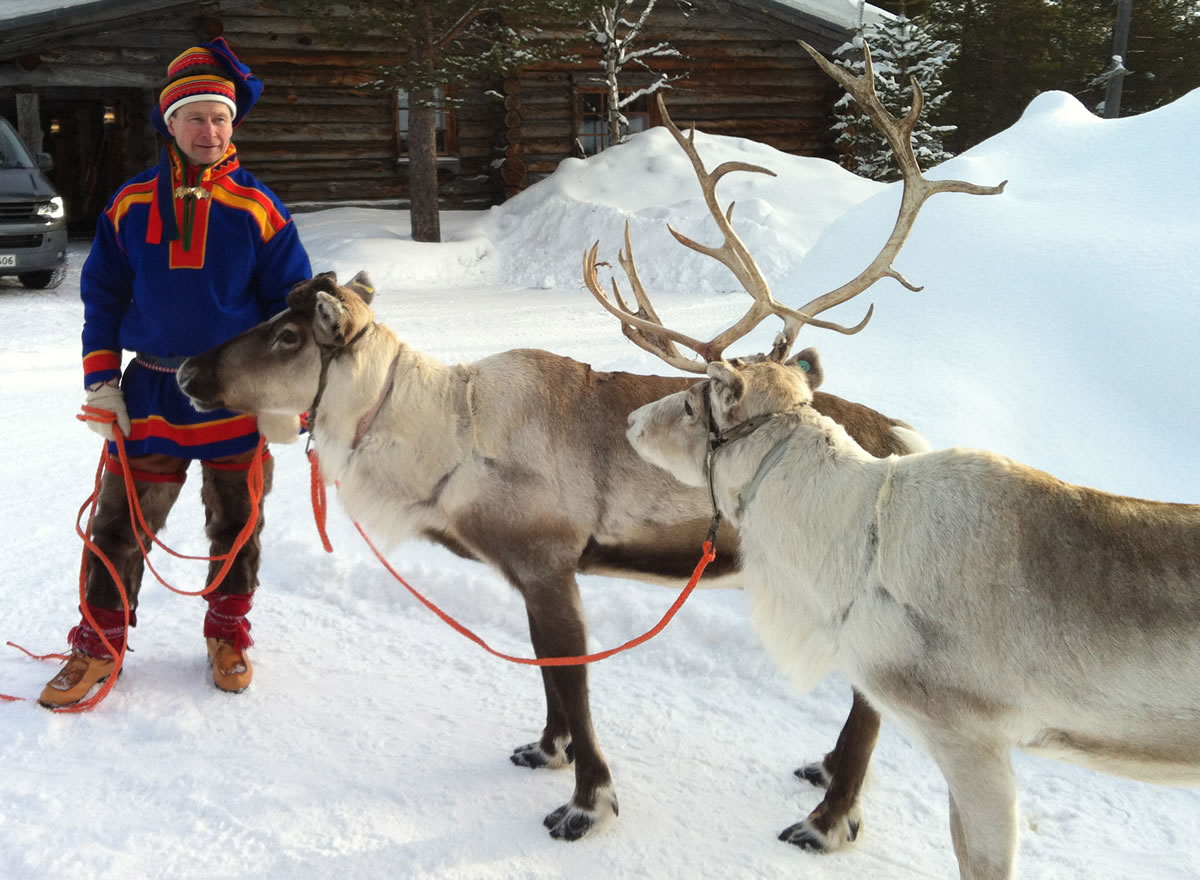Rudolph the fictional reindeer was famous for his oddly colored nose, but his true-life cousins have eyes that change color with the seasons.
In the summer, the eyes of Arctic reindeer appear gold, and around Christmas they turn to a deep blue, biologists have discovered. It’s not holiday magic, but rather a unique adaptation that helps these animals deal with the strange light conditions at the top of the world.
The reindeer’s world is one of extremes. Above the Arctic Circle, Christmas falls in the midst of a weekslong period of perpetual twilight in which the sun never rises and the landscape is cast in bluish hues. But from mid-May to late July, the sun never sets, creating a long, endless day.
Biologists at the University of Norway in Tromsø, one of the largest cities situated north of the Arctic Circle, wondered how the reindeer managed the transition from a world of near-total darkness to one of blinding light, when springtime sunlight reflects off still-unmelted snow.
To find out, they collected reindeer eyes from the Sami, indigenous herders who often slaughter the animals around the solstices, then mailed them to Glen Jeffery, a neuroscientist at University College London.
“That first time, they sent me 10 eyes from summer and 10 eyes from winter,” Jeffery said. “When I opened them, I had the biggest shock I’ve ever had in science — the winter ones were clearly blue and the summer ones were clearly gold. I wished I had someone sitting next to me to exclaim to.”
The color change occurs not on the iris, but on a reflective surface behind the central retina that’s known as the tapetum lucidum, Karl-Arne Stokkan and his colleagues in Norway discovered.
Humans don’t have this structure, but lots of other animals do. It helps nocturnal animals see at night by bouncing light back inside the eye, giving the light receptors in the retina a second chance to be stimulated. The tapetum lucidum is responsible for the flash of “eye shine” you see when a cat looks into a car’s headlights.
Jeffrey and his Norwegian colleagues found that when a reindeer’s tapetum is blue, 50 percent less light is reflected out of the eye than when the tapetum is gold. A reindeer with a blue tapetum sees less clearly than one with a gold tapetum, but its eyes are 1,000 times as sensitive to light.
“Clinically, the reindeer become glaucomic,” Jeffery said.
Perhaps Santa should find animals of another species to pull his sled on one of the darkest nights of winter.
But the scientists argue that losing acuity and gaining light sensitivity is probably a worthwhile trade-off for reindeer on the ground, because it allows them to detect a moving predator in the darkness — even if they can’t see it clearly.
“Reindeer are very plastic, so it is not surprising the eye would change,” said Perry Barboza, who studies Arctic animals at the University of Alaska at Fairbanks and was not involved with the study. “Many of their external characteristics change as winter approaches — their coats fill out and go from brown to white, they put on a lot of body fat. The eye color change is just another part of that story.”
The scientists determined that the color of light reflected by a reindeer’s tapetum likely depends on how much fluid pressure there is in the eye itself. It took Jeffrey and his Norwegian colleagues nearly 10 years to figure this out.
In the dark winter months, the reindeers’ pupils dilate completely to let in as much light as possible. That action also causes a flap to descend over the back of the eye where fluid normally drains out. Since the fluid has no way to escape, the pressure inside the eye increases. That, in turn, causes collagen fibers in the tapetum to squish together, which changes its color from gold to blue.
But blue and gold are not the only colors in the reindeer tapetum spectrum. The researchers also checked the eyes of a small herd of reindeer that lived on the campus of the University of Tromsø, and who were exposed to permanent distant urban lighting. Instead of turning blue in the winter, they became green.



